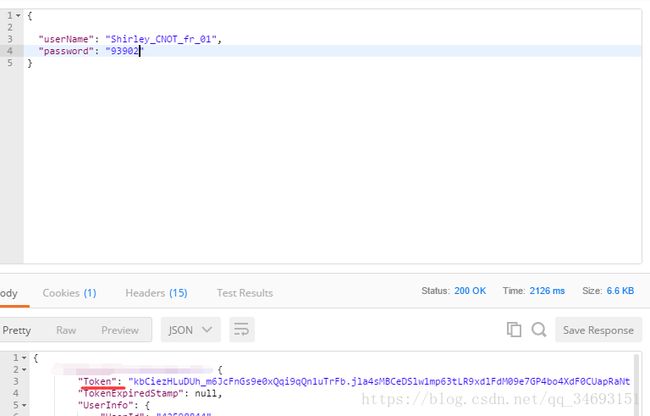- 对象的本质:OOP编程核心揭秘
止观止
计算机科学OOP面对对象编程
引言面向对象编程(OOP)革命性地重塑了软件开发,其核心在于“对象”——一种模拟现实实体的计算模型。对象不仅是数据容器,更是封装了状态和行为的自治单元,使程序从指令序列转变为交互网络。通过本解析,我们将层层递进,揭示对象在OOP中的根本角色:从定义延伸到设计实践,帮助读者跨越语言差异(如Java、Python或C++),掌握这一范式的精髓。章节构建遵循技术演进:先解剖对象本质,再关联OOP支柱,最
- 《前端基础核心知识笔记:HTML、CSS、JavaScript 及 BOM/DOM》
萌新小白的逆袭
前端笔记htmljavascript
html前端三剑客的介绍:HTML:页面内容的载体Css:用来美化和指定页面的显示效果JavaScript:页面显示的过程中,可以动态改变页面的内容重点属性type="text"文本输入type="password"密码输入SerlvertC超链接type="radio"value="值"单选框type="checkbox"value="值"多选框在作用设置编码格式 action是跳转的界面met
- @Override注解
oliveira-time
javajava开发语言
`@Override`是Java语言中的一个注解(Annotation),用于表示一个方法声明打算覆盖其父类中的另一个方法。当你在一个子类中的方法上使用`@Override`注解时,它告诉编译器这个方法是特意用来覆盖父类中的一个具有相同名称和参数列表的方法。####使用`@Override`注解的好处:1.**明确意图**:使用`@Override`可以清楚地表明你的意图是要覆盖父类中的方法,这有
- CSS面试题及详细答案140道之(101-120)
还是大剑师兰特
前后端面试题css大剑师CSS面试题
《前后端面试题》专栏集合了前后端各个知识模块的面试题,包括html,javascript,css,vue,react,java,Openlayers,leaflet,cesium,mapboxGL,threejs,nodejs,mangoDB,MySQL,Linux…。前后端面试题-专栏总目录文章目录一、本文面试题目录101.解释`text-indent`属性的作用。102.如何在CSS中实现响应
- Java内存模型
十丈_红尘
一谈谈对Java内存模型的理解1️⃣线程私有补充知识点:1.内存简介32位:2^32的可寻址范围;64位:2^64的可寻址范围;2.地址空间的划分内核空间:指操作系统程序和C运行时的空间,包括调度程序等;用户空间:Java程序运行时实际使用的空间;3.Java内存模型JDK1.84.程序计数器 1.当前线程所执行的字节码的行号指示器; 2.改变计数器的值来选取下一条需要执行的字节码指令; 3.和线
- ASP.NET Core Web API 内存缓存(IMemoryCache)入门指南
王维志
asp.netwebapiasp.net缓存后端c#.net
在WebAPI开发中,频繁访问数据库或第三方服务可能会带来性能瓶颈。为了提升接口响应速度并减轻后端压力,使用缓存是非常有效的优化手段。本文将带你快速上手ASP.NETCore提供的内存缓存(IMemoryCache),无需安装额外库,轻量、简单、适合中小项目什么是IMemoryCache?IMemoryCache是ASP.NETCore自带的缓存机制,使用服务器内存来存储数据对象,单机部署即可使用
- Java——SpringBoot系列【1】
本篇就围绕Java中的Spring框架做一些讲解吧【大部分都是SpringBoot的】1、什么是SpringBoot?多年来,随着新功能的增加,spring变得越来越复杂。只需访问https://spring.io/projects页面,我们就会看到可以在我们的应用程序中使用的所有Spring项目的不同功能。如果必须启动一个新的Spring项目,我们必须添加构建路径或添加Maven依赖关系,配置应
- 头歌实践JAVA项目开发实战入门--第10阶段【Linux操作系统】
开始更新头歌了!!!有需要的小伙伴自取吧;有什么好的建议也可以评论区留言,大家一起共勉!Linux操作系统一、Linux初体验#!/bin/bash#在以下部分写出完成任务的命令#*********begin*********#cd/ls-a#*********end*********#二、Linux常用命令#!/bin/bash#在以下部分写出完成任务的命令#*********begin****
- 头歌实践Java项目开发入门实战第三阶段【Java高级特性】
Y_03
头歌实践题java开发语言
本文来自头歌实践平台的Java项目实战入门【只有编程题】,如需访问其他阶段的文章,请自行阅读主页其他文章制作不易,请留下一个免费的点赞以及关注吧!!!一、Java高级特性-IO流2、字节流-输入输出packagestep2;importjava.io.File;importjava.io.FileInputStream;importjava.io.FileOutputStream;importja
- Java Future注意事项
泓礼
1.Future是否可以执行完确保对结果的处理,如果漏掉了一种情况,比如返回值为空时的处理,会导致程序阻塞,这样的bug还是很难调试的本质上是对全集的处理不好导致的问题,这种问题夹杂在future场景下,更难处理
- [spring6: BeanPostProcessor & BeanFactoryPostProcessor]-生命周期
idolyXyz
spring6-源码阅读spring
BeanFactoryPostProcessorBeanFactoryPostProcessor接口允许在Spring容器初始化完所有的bean定义之后,但还未实例化任何bean时,修改应用上下文的内部bean工厂。通过实现postProcessBeanFactory方法,你可以覆盖或添加属性,甚至是对急切初始化的beans进行修改。//AspectJWeavingEnabler,Configur
- Java框架入门——SpringBoot框架
初尘屿风
java初尘屿风SpringBootjavaspringspringbootmavenvue
文章目录前言一、SpringBoot是什么?二、请求与响应介绍二、springBoot之helloWorld总结前言Spring都包含了哪些部分呢?主要包含SpringBoot、SpringFramework、SpringData、SpringCloud、SpringCloudDataFlow、SpringSecurity、SpringBatch等众多项目。在spring的官网中对其有详细的介绍。
- Java——SpringBoot搭建(二)
文章目录Java成长中,学习记录一、SpringBoot二、controller控制层三、entity实体类四、mapper持久层五、service业务逻辑层总结Java成长中,学习记录小白记录学习springboot项目的过程,后续内容在专栏持续更新一、SpringBootspringboot可分为4层1.controller控制层2.entity实体类3.mapper持久层4.service业
- [spring6: AspectJAdvisorFactory & AspectJProxyFactory]-源码解析
idolyXyz
spring6-源码阅读spring
推荐阅读:[spring6:AspectMetadata&AspectInstanceFactory]-源码解析[spring6:TargetSource&AopProxyFactory&AdvisorChainFactory&ProxyFactory]-源码分析AspectJAdvisorFactoryAspectJAdvisorFactory接口用于从使用AspectJ注解语法的类中创建Spr
- LinkedList集合源码解析
小北m
java
LinkedList集合LinkedList是一个基于双向链表实现的集合类LinkedList实现了以下接口:List:表明它是一个列表,支持添加、删除、查找等操作,并且可以通过下标进行访问。Deque:继承自Queue接口,具有双端队列的特性,支持从两端插入和删除元素,方便实现栈和队列等数据结构。Cloneable:表明它具有拷贝能力,可以进行深拷贝或浅拷贝操作。Serializable:表明它
- 底分型量化选股公式如何编写?掌握这些要点轻松选出潜力股
炒股自动化:申请官方API接口,散户也可以python炒股自动化(0),申请券商API接口python炒股自动化(1),量化交易接口区别Python炒股自动化(2):获取股票实时数据和历史数据Python炒股自动化(3):分析取回的实时数据和历史数据Python炒股自动化(4):通过接口向交易所发送订单Python炒股自动化(5):通过接口查询订单,查询账户资产股票量化,Python炒股,CSDN
- 架构解密|一步步打造高可用的 JOCR OCR 识别服务
xgc_java
架构ocr状态模式
架构解密|一步步打造高可用的JOCROCR识别服务在各类拍照取字、票据扫描、合同归档的场景中,OCR(光学字符识别)早已成为核心能力。但要把“图片→文字”打磨成一条工业级、可观测、可扩展的服务链路,绝不仅仅是简单地调用第三方接口。本文将结合JOCROCR识别完整流程图,深入剖析从前端到最终结果的每一个环节,帮助你用架构思维设计高可用、高性能、低成本的OCR服务。一、整体架构全景在深入细节之前,我们
- 2025.06.11华为暑期实习机试真题【最大的矩形新游戏】Java/Python/C++/JS/C 实现
MISAYAONE
python华为javac++华为暑期实习机试
目录题目思路Code题目小华之前玩过一个游戏,在横轴上放了n个相邻的矩形,每个矩形的宽度是1,而第i(1≤i≤n)个矩形的高度为h[i],这n个短形构成了一个直方图,在直方图中我留能够勾勒出来的矩形的最大面积。这个游戏小华已经玩得很腻了,于是小华就想增加一下难度,现在有1次交换任意2个矩形的操作,请问在交换后,能够勾勒出的最大的短形面积能达到多少呢?输入描述第-行包含一个整数n(2=h的矩形聚集在
- 探索Pebble时代遗留的瑰宝:Slate框架简介
宣苓滢Rosa
探索Pebble时代遗留的瑰宝:Slate框架简介项目介绍随着技术迭代的脚步,Slate——曾经为Pebble智能手表应用提供强大支持的前端框架,虽然已被Clay取而代之,但其在移动配置页面开发领域的创新精神值得回顾。它以简洁高效的设计理念,让开发者能够快速创建美观且用户友好的配置界面,曾是众多Pebble应用背后的功臣。技术深度剖析Slate基于轻量级的JavaScript库Zepto.js构建
- tiktok 弹幕 x-bogus signature 分析
声明:本文章中所有内容仅供学习交流使用,不用于其他任何目的,抓包内容、敏感网址、数据接口等均已做脱敏处理,严禁用于商业用途和非法用途,否则由此产生的一切后果均与作者无关!逆向分析tiktok对ip和网络限制太多了,废了好几个ip才测完。在wss前还有一个接口需要拿到加密参数简单分析了一下。先请求拿到第一步加密参数url=requests.get('http://127.0.0.1:3000/url
- tiktok 弹幕 LikeMessage分析
wx a15018601872
javagonode.jspythontiktok弹幕probuf
声明:本文章中所有内容仅供学习交流使用,不用于其他任何目的,抓包内容、敏感网址、数据接口等均已做脱敏处理,严禁用于商业用途和非法用途,否则由此产生的一切后果均与作者无关!逆向分析编写解析文件序号必须和浏览器序号一致否则没有数据。数据为空情况。部分代码如下functiondecrypt(res){D=newwindow.K()returnD.decodeResponse(base64ToArrayB
- web直播弹幕抓取分析 signature
声明:本文章中所有内容仅供学习交流使用,不用于其他任何目的,抓包内容、敏感网址、数据接口等均已做脱敏处理,严禁用于商业用途和非法用途,否则由此产生的一切后果均与作者无关!前言最近遇到太多难点了卡了很久,魔改编译node,和直播弹幕dy/tiktok简单记录一下。进阶卡了好几天。逆向过程我也看了很多人开源了但是基本都是用不了的。不是417就是415补环境基本没补所以很容易被检测。我就随便照着网上开源
- Python在股票数据分析中的应用,如何通过代码实现精准预测股价走势?
股票程序化交易接口
量化交易股票API接口Python股票量化交易数据分析python股票数据分析股价走势预测代码实现股票量化接口股票API接口
Python股票接口实现查询账户,提交订单,自动交易(1)Python股票程序交易接口查账,提交订单,自动交易(2)股票量化,Python炒股,CSDN交流社区>>>数据获取与导入在股票数据分析中,首先要获取相关数据。Python有许多库可实现这一功能,比如pandas-datareader。使用它可以轻松从知名数据源如雅虎财经获取股票的历史价格、成交量等数据。只需简单几行代码,就能将特定股票在特
- 金融量化交易如何精准把握市场趋势?这些策略你不能错过!
股票程序化交易接口
量化交易股票API接口Python股票量化交易金融金融量化交易市场趋势技术分析策略基本面分析策略股票量化接口股票API接口
Python股票接口实现查询账户,提交订单,自动交易(1)Python股票程序交易接口查账,提交订单,自动交易(2)股票量化,Python炒股,CSDN交流社区>>>金融量化交易把握市场趋势的基础认知金融量化交易旨在通过数学模型和计算机算法来执行交易决策。市场趋势反映了市场价格的总体走向,量化交易与市场趋势紧密相连。量化交易借助数据和算法去捕捉市场趋势信号,以决定买卖时机。准确把握市场趋势能为量化
- ABP VNext + Temporal:分布式工作流与 Saga
Kookoos
AbpvNext.netABPVNext.netTemporalContinue-As-New
ABPVNext+Temporal:分布式工作流与Saga目录ABPVNext+Temporal:分布式工作流与SagaTL;DR1.环境与依赖️2.系统架构概览3.接入Temporal客户端&OpenTelemetry4.定义Workflow与Activities✍️4.1Workflow接口4.2Activities接口与实现5.Worker宿主托管&DI映射6.Workflow实现:补偿、重
- Node.js基础用法
Komorebi_9999
node.js
一、基础用法与核心模块1.运行Node.js脚本bash#运行JS文件nodescript.js#进入交互式环境(REPL)node2.核心模块示例文件系统(fs模块)javascriptconstfs=require('fs').promises;//异步Promise版本constpath=require('path');//读取文件asyncfunctionreadFile(){try{co
- tiktok 弹幕 逆向分析
wx a15018601872
pythonjavatiktoktiktok弹幕tiktok弹幕逆向分析a-bogusX-Gnarly
声明:本文章中所有内容仅供学习交流使用,不用于其他任何目的,抓包内容、敏感网址、数据接口等均已做脱敏处理,严禁用于商业用途和非法用途,否则由此产生的一切后果均与作者无关!逆向分析部分python代码部分python代码is_match=check_payload_type(response_msg.payload_type,["im_enter_room_resp","msg"])ifis_mat
- Python+Selenium自动化
1,什么是seleniumselenium是一个开源的自动化测试框架,主要适用WEB测试,可以支持多种语言(Java,C#,Python,php等),既然支持多语言开发,那跨平台自然就不用多说啦,selenium有几个版本,一个是seleniumIDE(是一个安装在火狐浏览器上的一个插件,可以用来录制脚本,然后导出自动生成对应的开发语言文件),seleniumGrid(自动化辅助工具,楼主还没深入
- 高频面试雷区:Java Object六大核心方法源码剖析
JavaObject核心方法全解:从源码到实战的深度指南在Java开发中,90%的对象操作都离不开Object类的方法,但大多数开发者仅停留在表面理解。本文将深入源码揭示每个方法的底层机制,并通过真实场景展示如何正确使用这些基础但强大的工具。一、Object类全景图:Java对象的基因库Object+wait():void+wait(longtimeout):void+notify():void+
- AI-调查研究-33- 咖啡价格战 连锁咖啡低价策略全景分析:补贴、成本与盈利模型
点一下关注吧!!!非常感谢!!持续更新!!!AI篇持续更新中!(长期更新)AI炼丹日志-30-新发布【1T万亿】参数量大模型!Kimi‑K2开源大模型解读与实践,持续打造实用AI工具指南!Java篇正式开启!(300篇)目前2025年07月16日更新到:Java-74深入浅出RPCDubboAdmin可视化管理安装使用源码编译、Docker启动MyBatis已完结,Spring已完结,Nginx已
- 关于旗正规则引擎中的MD5加密问题
何必如此
jspMD5规则加密
一般情况下,为了防止个人隐私的泄露,我们都会对用户登录密码进行加密,使数据库相应字段保存的是加密后的字符串,而非原始密码。
在旗正规则引擎中,通过外部调用,可以实现MD5的加密,具体步骤如下:
1.在对象库中选择外部调用,选择“com.flagleader.util.MD5”,在子选项中选择“com.flagleader.util.MD5.getMD5ofStr({arg1})”;
2.在规
- 【Spark101】Scala Promise/Future在Spark中的应用
bit1129
Promise
Promise和Future是Scala用于异步调用并实现结果汇集的并发原语,Scala的Future同JUC里面的Future接口含义相同,Promise理解起来就有些绕。等有时间了再仔细的研究下Promise和Future的语义以及应用场景,具体参见Scala在线文档:http://docs.scala-lang.org/sips/completed/futures-promises.html
- spark sql 访问hive数据的配置详解
daizj
spark sqlhivethriftserver
spark sql 能够通过thriftserver 访问hive数据,默认spark编译的版本是不支持访问hive,因为hive依赖比较多,因此打的包中不包含hive和thriftserver,因此需要自己下载源码进行编译,将hive,thriftserver打包进去才能够访问,详细配置步骤如下:
1、下载源码
2、下载Maven,并配置
此配置简单,就略过
- HTTP 协议通信
周凡杨
javahttpclienthttp通信
一:简介
HTTPCLIENT,通过JAVA基于HTTP协议进行点与点间的通信!
二: 代码举例
测试类:
import java
- java unix时间戳转换
g21121
java
把java时间戳转换成unix时间戳:
Timestamp appointTime=Timestamp.valueOf(new SimpleDateFormat("yyyy-MM-dd HH:mm:ss").format(new Date()))
SimpleDateFormat df = new SimpleDateFormat("yyyy-MM-dd hh:m
- web报表工具FineReport常用函数的用法总结(报表函数)
老A不折腾
web报表finereport总结
说明:本次总结中,凡是以tableName或viewName作为参数因子的。函数在调用的时候均按照先从私有数据源中查找,然后再从公有数据源中查找的顺序。
CLASS
CLASS(object):返回object对象的所属的类。
CNMONEY
CNMONEY(number,unit)返回人民币大写。
number:需要转换的数值型的数。
unit:单位,
- java jni调用c++ 代码 报错
墙头上一根草
javaC++jni
#
# A fatal error has been detected by the Java Runtime Environment:
#
# EXCEPTION_ACCESS_VIOLATION (0xc0000005) at pc=0x00000000777c3290, pid=5632, tid=6656
#
# JRE version: Java(TM) SE Ru
- Spring中事件处理de小技巧
aijuans
springSpring 教程Spring 实例Spring 入门Spring3
Spring 中提供一些Aware相关de接口,BeanFactoryAware、 ApplicationContextAware、ResourceLoaderAware、ServletContextAware等等,其中最常用到de匙ApplicationContextAware.实现ApplicationContextAwaredeBean,在Bean被初始后,将会被注入 Applicati
- linux shell ls脚本样例
annan211
linuxlinux ls源码linux 源码
#! /bin/sh -
#查找输入文件的路径
#在查找路径下寻找一个或多个原始文件或文件模式
# 查找路径由特定的环境变量所定义
#标准输出所产生的结果 通常是查找路径下找到的每个文件的第一个实体的完整路径
# 或是filename :not found 的标准错误输出。
#如果文件没有找到 则退出码为0
#否则 即为找不到的文件个数
#语法 pathfind [--
- List,Set,Map遍历方式 (收集的资源,值得看一下)
百合不是茶
listsetMap遍历方式
List特点:元素有放入顺序,元素可重复
Map特点:元素按键值对存储,无放入顺序
Set特点:元素无放入顺序,元素不可重复(注意:元素虽然无放入顺序,但是元素在set中的位置是有该元素的HashCode决定的,其位置其实是固定的)
List接口有三个实现类:LinkedList,ArrayList,Vector
LinkedList:底层基于链表实现,链表内存是散乱的,每一个元素存储本身
- 解决SimpleDateFormat的线程不安全问题的方法
bijian1013
javathread线程安全
在Java项目中,我们通常会自己写一个DateUtil类,处理日期和字符串的转换,如下所示:
public class DateUtil01 {
private SimpleDateFormat dateformat = new SimpleDateFormat("yyyy-MM-dd HH:mm:ss");
public void format(Date d
- http请求测试实例(采用fastjson解析)
bijian1013
http测试
在实际开发中,我们经常会去做http请求的开发,下面则是如何请求的单元测试小实例,仅供参考。
import java.util.HashMap;
import java.util.Map;
import org.apache.commons.httpclient.HttpClient;
import
- 【RPC框架Hessian三】Hessian 异常处理
bit1129
hessian
RPC异常处理概述
RPC异常处理指是,当客户端调用远端的服务,如果服务执行过程中发生异常,这个异常能否序列到客户端?
如果服务在执行过程中可能发生异常,那么在服务接口的声明中,就该声明该接口可能抛出的异常。
在Hessian中,服务器端发生异常,可以将异常信息从服务器端序列化到客户端,因为Exception本身是实现了Serializable的
- 【日志分析】日志分析工具
bit1129
日志分析
1. 网站日志实时分析工具 GoAccess
http://www.vpsee.com/2014/02/a-real-time-web-log-analyzer-goaccess/
2. 通过日志监控并收集 Java 应用程序性能数据(Perf4J)
http://www.ibm.com/developerworks/cn/java/j-lo-logforperf/
3.log.io
和
- nginx优化加强战斗力及遇到的坑解决
ronin47
nginx 优化
先说遇到个坑,第一个是负载问题,这个问题与架构有关,由于我设计架构多了两层,结果导致会话负载只转向一个。解决这样的问题思路有两个:一是改变负载策略,二是更改架构设计。
由于采用动静分离部署,而nginx又设计了静态,结果客户端去读nginx静态,访问量上来,页面加载很慢。解决:二者留其一。最好是保留apache服务器。
来以下优化:
- java-50-输入两棵二叉树A和B,判断树B是不是A的子结构
bylijinnan
java
思路来自:
http://zhedahht.blog.163.com/blog/static/25411174201011445550396/
import ljn.help.*;
public class HasSubtree {
/**Q50.
* 输入两棵二叉树A和B,判断树B是不是A的子结构。
例如,下图中的两棵树A和B,由于A中有一部分子树的结构和B是一
- mongoDB 备份与恢复
开窍的石头
mongDB备份与恢复
Mongodb导出与导入
1: 导入/导出可以操作的是本地的mongodb服务器,也可以是远程的.
所以,都有如下通用选项:
-h host 主机
--port port 端口
-u username 用户名
-p passwd 密码
2: mongoexport 导出json格式的文件
- [网络与通讯]椭圆轨道计算的一些问题
comsci
网络
如果按照中国古代农历的历法,现在应该是某个季节的开始,但是由于农历历法是3000年前的天文观测数据,如果按照现在的天文学记录来进行修正的话,这个季节已经过去一段时间了。。。。。
也就是说,还要再等3000年。才有机会了,太阳系的行星的椭圆轨道受到外来天体的干扰,轨道次序发生了变
- 软件专利如何申请
cuiyadll
软件专利申请
软件技术可以申请软件著作权以保护软件源代码,也可以申请发明专利以保护软件流程中的步骤执行方式。专利保护的是软件解决问题的思想,而软件著作权保护的是软件代码(即软件思想的表达形式)。例如,离线传送文件,那发明专利保护是如何实现离线传送文件。基于相同的软件思想,但实现离线传送的程序代码有千千万万种,每种代码都可以享有各自的软件著作权。申请一个软件发明专利的代理费大概需要5000-8000申请发明专利可
- Android学习笔记
darrenzhu
android
1.启动一个AVD
2.命令行运行adb shell可连接到AVD,这也就是命令行客户端
3.如何启动一个程序
am start -n package name/.activityName
am start -n com.example.helloworld/.MainActivity
启动Android设置工具的命令如下所示:
# am start -
- apache虚拟机配置,本地多域名访问本地网站
dcj3sjt126com
apache
现在假定你有两个目录,一个存在于 /htdocs/a,另一个存在于 /htdocs/b 。
现在你想要在本地测试的时候访问 www.freeman.com 对应的目录是 /xampp/htdocs/freeman ,访问 www.duchengjiu.com 对应的目录是 /htdocs/duchengjiu。
1、首先修改C盘WINDOWS\system32\drivers\etc目录下的
- yii2 restful web服务[速率限制]
dcj3sjt126com
PHPyii2
速率限制
为防止滥用,你应该考虑增加速率限制到您的API。 例如,您可以限制每个用户的API的使用是在10分钟内最多100次的API调用。 如果一个用户同一个时间段内太多的请求被接收, 将返回响应状态代码 429 (这意味着过多的请求)。
要启用速率限制, [[yii\web\User::identityClass|user identity class]] 应该实现 [[yii\filter
- Hadoop2.5.2安装——单机模式
eksliang
hadoophadoop单机部署
转载请出自出处:http://eksliang.iteye.com/blog/2185414 一、概述
Hadoop有三种模式 单机模式、伪分布模式和完全分布模式,这里先简单介绍单机模式 ,默认情况下,Hadoop被配置成一个非分布式模式,独立运行JAVA进程,适合开始做调试工作。
二、下载地址
Hadoop 网址http:
- LoadMoreListView+SwipeRefreshLayout(分页下拉)基本结构
gundumw100
android
一切为了快速迭代
import java.util.ArrayList;
import org.json.JSONObject;
import android.animation.ObjectAnimator;
import android.os.Bundle;
import android.support.v4.widget.SwipeRefreshLayo
- 三道简单的前端HTML/CSS题目
ini
htmlWeb前端css题目
使用CSS为多个网页进行相同风格的布局和外观设置时,为了方便对这些网页进行修改,最好使用( )。http://hovertree.com/shortanswer/bjae/7bd72acca3206862.htm
在HTML中加入<table style=”color:red; font-size:10pt”>,此为( )。http://hovertree.com/s
- overrided方法编译错误
kane_xie
override
问题描述:
在实现类中的某一或某几个Override方法发生编译错误如下:
Name clash: The method put(String) of type XXXServiceImpl has the same erasure as put(String) of type XXXService but does not override it
当去掉@Over
- Java中使用代理IP获取网址内容(防IP被封,做数据爬虫)
mcj8089
免费代理IP代理IP数据爬虫JAVA设置代理IP爬虫封IP
推荐两个代理IP网站:
1. 全网代理IP:http://proxy.goubanjia.com/
2. 敲代码免费IP:http://ip.qiaodm.com/
Java语言有两种方式使用代理IP访问网址并获取内容,
方式一,设置System系统属性
// 设置代理IP
System.getProper
- Nodejs Express 报错之 listen EADDRINUSE
qiaolevip
每天进步一点点学习永无止境nodejs纵观千象
当你启动 nodejs服务报错:
>node app
Express server listening on port 80
events.js:85
throw er; // Unhandled 'error' event
^
Error: listen EADDRINUSE
at exports._errnoException (
- C++中三种new的用法
_荆棘鸟_
C++new
转载自:http://news.ccidnet.com/art/32855/20100713/2114025_1.html
作者: mt
其一是new operator,也叫new表达式;其二是operator new,也叫new操作符。这两个英文名称起的也太绝了,很容易搞混,那就记中文名称吧。new表达式比较常见,也最常用,例如:
string* ps = new string("
- Ruby深入研究笔记1
wudixiaotie
Ruby
module是可以定义private方法的
module MTest
def aaa
puts "aaa"
private_method
end
private
def private_method
puts "this is private_method"
end
end
